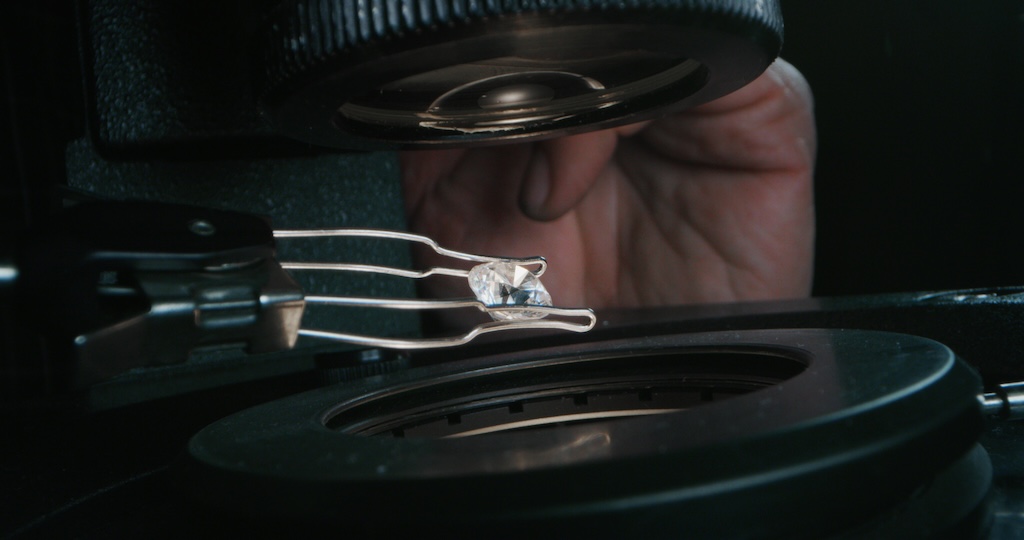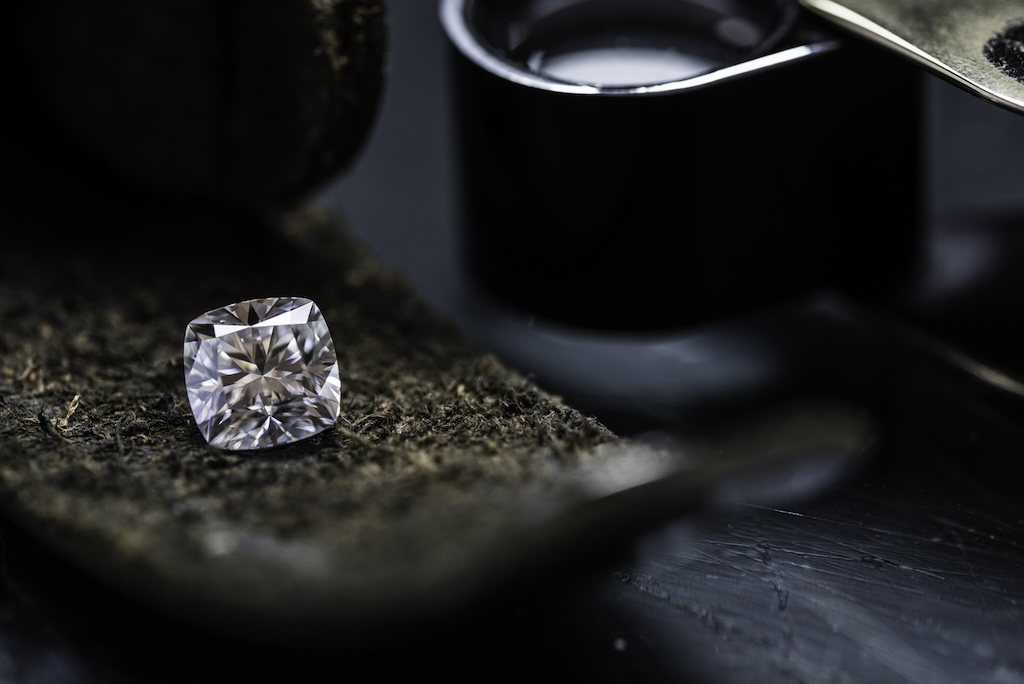Lab-grown diamonds are becoming increasingly popular, especially in North America, where they now account for 20% of the global diamond market. Many people choose these affordable and more sustainable alternatives to natural diamonds and being able to tell them apart from the mined ones is essential to help consumers make informed buying decisions. Identifying lab-grown diamonds guarantees accurate appraisal, builds market trust, prevents fraud and helps to ensure proper insurance and certification.
Distinguishing Lab-Grown from Natural Diamonds
Diamonds that are created in laboratories and those that are mined have quite distinct paths to becoming glittering jewels, despite having the same chemical makeup (both are made of pure, unadulterated carbon).
- Mined: Mined diamonds form millions of years of extreme heat and pressure deep under the Earth.
- Lab-Grown: In contrast, man-made diamonds are produced in carefully controlled settings that mimic these natural processes in a matter of weeks. There are the two primary methods of growing lab diamonds:
- High Pressure, High Temperature (HPHT) technology essentially replicates the extreme heat and pressure seen in subterranean environments, which is where genuine diamonds are formed. They take regular carbon and apply extreme pressure and heat to it, creating a pressure cooker-like environment that produces diamonds.
- Another method is Chemical Vapour Deposition (CVD). The gas is broken down into minute carbon atoms via this sophisticated process. Subsequently, these carbon atoms accumulate on a little seed diamond, layer by layer, creating a new diamond.
Diamonds created in laboratories have the same appearance as natural diamonds. Their glitter and brilliance are comparable. It follows that only glancing at the jewellery item would not allow you to distinguish between the two. So, how can you tell the difference between lab and natural diamonds? Let’s check the common differences:
The Common Differences Between Natural and Lab-Grown Diamonds
Inscriptions
- Natural Diamonds: The widest part of a diamond, which is called a girdle, includes information about the diamond grade or serial number, which shows that it’s a natural one.
- Lab-Grown Diamonds: Lab-grown diamonds include a unique report number relevant to the stone (outlining the diamond’s characteristics like cut, clarity, colour, and carat weight) and the initials of the certifying lab or agency.
Growth Patterns
- Natural Diamonds: Have irregular and varied growth patterns formed over millions of years.
- Lab-Grown Diamonds: Advanced equipment can detect growth patterns unique to lab-grown diamonds. HPHT diamonds may show cuboctahedral patterns, while CVD diamonds often display parallel growth lines or striations.
Inclusions and Imperfections
- Natural Diamonds: Tiny mineral inclusions and natural imperfections are common in natural diamonds.
- Lab-Grown Diamonds: Inclusions are typically different, with HPHT diamonds showing metallic inclusions and CVD diamonds displaying unique growth patterns.
Methods to Identify a Lab-Grown Diamond: Are They Marked?
Here are some tools and techniques you can use to identify a lab-grown diamond.
- Visual Inspection
As mentioned before, you can check the inclusions that lab diamonds have, such as metallic and irregular inclusions. Lab-grown diamonds may show growth patterns that are different from natural diamonds when viewed under magnification. These patterns, known as graining, can be indicative of the diamond’s synthetic origin.
- Laser Inscriptions
Are lab-grown diamonds marked? An inscription on a lab-grown diamond may change depending on the lab that created it. Typical markers include the following:
- Lab initials (GIA, IGI, etc.)
- A brief code that symbolizes the laboratory and the diamond’s development
- A special serial number linked to a certificate from the Gemological Institute
You can see these inscriptions with a microscope and they are often located on the diamond’s girdle.

- Diamond Type Analysis
Diamonds created in a lab are more likely to be Type IIa, meaning they have either no nitrogen impurities or very little of it. While frequent in lab-grown diamonds, this form of diamond is unusual in natural diamonds. Diagnosing this sort of diamond requires specialized equipment.
- Professional Techniques Used by Jewellers
Although visual indicators provide a useful starting point, expert identification calls for both certain instruments and a trained eye. Jewellers and gemologists use various methods to examine a diamond’s features and growth patterns
- Microscopic Analysis: Imagine a diamond detective with a super-powered magnifying glass! That’s what gemologists use to get a super close look at your diamond’s tiny details. These details, like unique cloud formations or growth patterns, can be clues to whether the diamond was born underground or created in a lab.
- Ultraviolet (UV) Fluorescence: When exposed to UV light, certain diamonds become somewhat glowing. Using photoluminescence spectroscopy testing, gemologists can identify natural and lab diamonds. Lab-grown diamonds fluoresce less often than their natural counterparts, with natural diamonds showing fluorescence in 35-50% of stones examined. Natural diamonds often show a blue glow under this light, while lab-grown ones might have a yellow or orange hue.
So, gemologists will use these advanced technologies to examine your diamond and offer a thorough report based on parameters such as colour, cut, and clarity.
The Role of Diamond Testers
Can a diamond tester detect lab-made jewellery? Imagine a little gadget that zaps your diamond with a heat wave and listens for its response. That’s a diamond tester! It checks how well the stone conducts heat (fancy talk for how quickly it gets warm). Diamonds are great heat conductors, so the tester will usually say “diamond” if the stone heats up fast. But here’s the catch: this tester can’t tell the difference between a diamond born from the Earth and one created in a lab. It just confirms you have a diamond, not where it came from.
Now you know all the steps for identifying a lab-grown diamond. Use these steps to make an informed decision and remember to work with gemologists who can identify lab-created diamonds more accurately by using advanced technologies. If you’re looking to buy a lab diamond engagement ring, choose a reputable jewellery store that offers certified diamonds for peace of mind and quality assurance.

